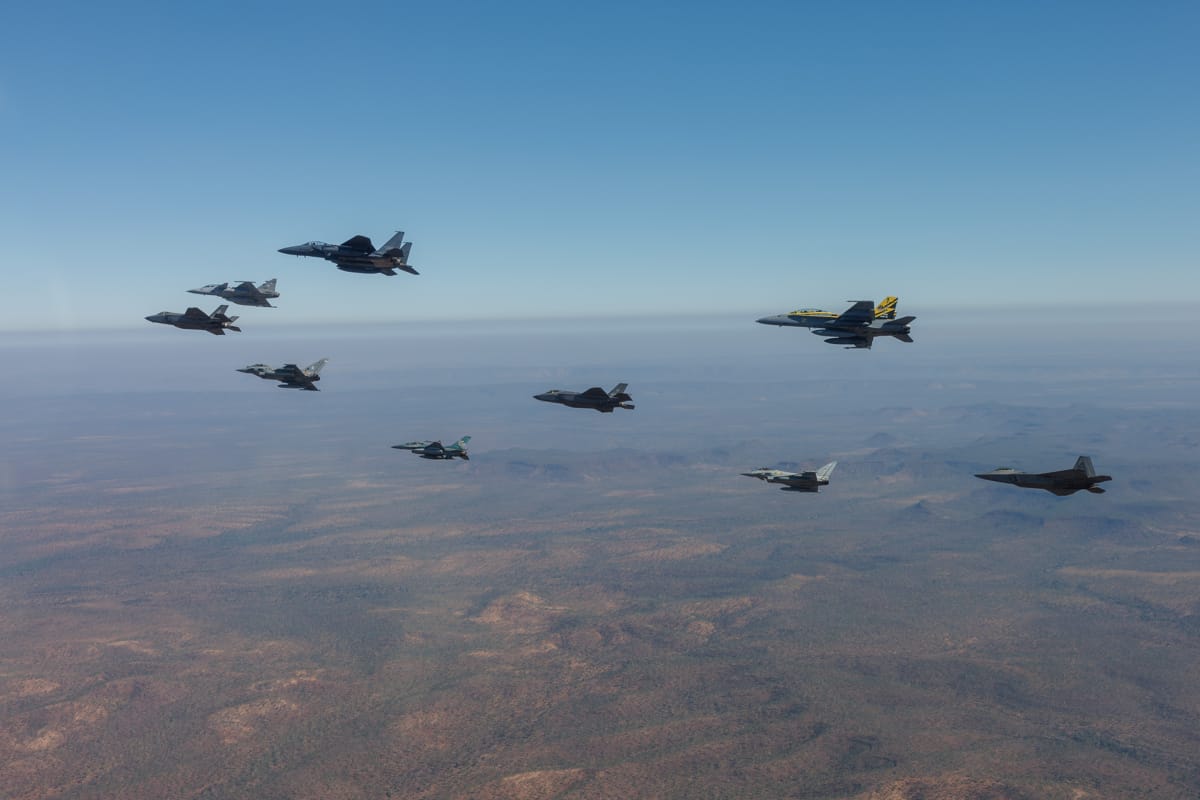The rise of minilaterals, quadrilaterals, and other groupings in the Indo-Pacific have become increasingly important to the regional security architecture. However, a significant challenge to what Australian Defence Minister Richard Marles has described as this “latticework of partnerships” approach is the ability bring together the military elements of these groupings in the event of a crisis – whether in response to a disaster or a regional conflict.
This “interoperability” is key to military relationships. However, unlike organisations such as the North Atlantic Treaty Organisation, which have agreed-upon frameworks and generalised strategic alignment, the Indo-Pacific latticework approach lacks the necessary functionality.
The omnipresence of the word interoperability in military diplomacy at times overshadows its true meaning.
The challenge for Australia then becomes to define interoperability in the context of its relationships in Southeast Asia, to determine how can it be harnessed and enhanced. This means being deliberate about setting Australia’s goals, understanding the likely common missions, and the boundaries of the relationships.
Being specific and deliberate about the nature of interoperability is important. It has become common parlance for politicians, diplomats and Defence personnel alike to list a key outcome of an exercise or working group activities as one of “interoperability”, or as Marles has done previously been “interchangeable”.
But the omnipresence of the word interoperability in military diplomacy at times overshadows its true meaning, which in turn can distort important aspects of military engagement that should be the focus. The term interoperability is not unique to the military setting, but even within the defence realm it is often poorly defined.
NATO defines interoperability as the “ability to act together coherently, effectively and efficiently to achieve Allied tactical, operational and strategic objectives”. The challenge in applying this definition to Australia’s relationship with Southeast Asian nations is that the operational and strategic objectives may not always align, and it occurs outside the framework of an alliance.

Australian military doctrine places a greater emphasis on “systems” defining interoperability, as the “ability of systems, units or forces to act together, to provide services to or from, or exchange information with partner systems, units or forces”. With its technical emphasis, this definition focuses on the ease in which information can be exchanged, such as the ability to pass data or undertake classified communications. Doing so is predicated on a commonality of communications networks along with high level agreements regarding the sharing of secrets. These elements can be achieved in an inter-service or even in an alliance scenario. But this is less applicable to Australia’s relationships in Southeast Asia.
For one reason, many of Australia’s most prominent Southeast Asian partners – such as the Philippines, Vietnam and Indonesia – acquire their systems from a vast array of partners, some including Russia and China. For Indonesia, the diversity of defence acquisition sources is considered part of the policy of non-alignment.
By focusing on shared mission sets and realistic goals for collaboration, Australia can build more meaningful and effective operational partnerships in the region.
A more fitting definition of the interoperability sought between Australia and its Southeast Asian partners might emphasise a shared familiarity. This means agreeing at the political level on the mission sets and scenario planning, which can be unique to the relationship or grouping where the goal is being pursued.
Interoperability exists on a spectrum – it’s not a binary measure, fully interoperable or not, but rather it occurs in varying degrees. The Royal Australian Air Force breaks these degrees down to the areas of deconflicted, compatible and integrated, and this approach would have broader applicability to kind of military interoperability sought between Australia and Southeast Asian countries. These can serve as aspirational goals within the agreed mission sets or operational scenarios.
“Interchangeability” implies something more, yet there is no publicly available Australian military definition for it. NATO defines interchangeability as “the ability of one product, process or service to be used in place of another to fulfil the same requirements”. But for Australia, this kind of ambition is most likely to be achieved with alliance partners such as the United States and New Zealand. It is unlikely to be achieved in the context of the latticework approach to the Indo-Pacific, or in Australia’s current, bilateral or minilateral relationships in Southeast Asia.
But by focusing on shared mission sets and realistic goals for collaboration, Australia can build more meaningful and effective operational partnerships in the region. Australia cannot define interoperability as a one-size-fits-all solution, but as a flexible, context-driven approach, tailored to the specific needs and challenges of its Southeast Asian partners.

